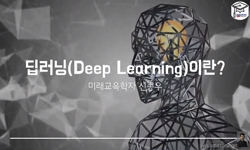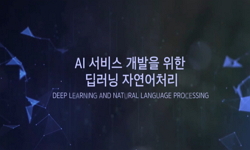Deep learning is getting attention recently. The deep learning technique which had been applied in competitions of the International Conference on Image Recognition Technology(ILSVR) and AlphaGo is Convolution Neural Network(CNN). CNN is characterized...
http://chineseinput.net/에서 pinyin(병음)방식으로 중국어를 변환할 수 있습니다.
변환된 중국어를 복사하여 사용하시면 됩니다.
- 中文 을 입력하시려면 zhongwen을 입력하시고 space를누르시면됩니다.
- 北京 을 입력하시려면 beijing을 입력하시고 space를 누르시면 됩니다.
https://www.riss.kr/link?id=A105409394
- 저자
- 발행기관
- 학술지명
- 권호사항
-
발행연도
2018
-
작성언어
Korean
- 주제어
-
KDC
003
-
등재정보
KCI등재
-
자료형태
학술저널
- 발행기관 URL
-
수록면
221-241(21쪽)
- DOI식별코드
- 제공처
-
0
상세조회 -
0
다운로드
부가정보
다국어 초록 (Multilingual Abstract)
Deep learning is getting attention recently. The deep learning technique which had been applied in competitions of the International Conference on Image Recognition Technology(ILSVR) and AlphaGo is Convolution Neural Network(CNN). CNN is characterized in that the input image is divided into small sections to recognize the partial features and combine them to recognize as a whole. Deep learning technologies are expected to bring a lot of changes in our lives, but until now, its applications have been limited to image recognition and natural language processing.
The use of deep learning techniques for business problems is still an early research stage. If their performance is proved, they can be applied to traditional business problems such as future marketing response prediction, fraud transaction detection, bankruptcy prediction, and so on. So, it is a very meaningful experiment to diagnose the possibility of solving business problems using deep learning technologies based on the case of online shopping companies which have big data, are relatively easy to identify customer behavior and has high utilization values. Especially, in online shopping companies, the competition environment is rapidly changing and becoming more intense. Therefore, analysis of customer behavior for maximizing profit is becoming more and more important for online shopping companies.
In this study, we propose CNN model of Heterogeneous Information Integration using CNN as a way to improve the predictive power of customer behavior in online shopping enterprises. In order to propose a model that optimizes the performance, which is a model that learns from the convolution neural network of the multi-layer perceptron structure by combining structured and unstructured information, this model uses heterogeneous information integration, unstructured information vector conversion, ‘multi-layer perceptron design, and evaluate the performance of each architecture, and confirm the proposed model based on the results. In addition, the target variables for predicting customer behavior are defined as six binary classification problems: re-purchaser, churn, frequent shopper, frequent refund shopper, high amount shopper, high discount shopper.
In order to verify the usefulness of the proposed model, we conducted experiments using actual data of domestic specific online shopping company. This experiment uses actual transactions, customers, and VOC data of specific online shopping company in Korea. Data extraction criteria are defined for 47,947 customers who registered at least one VOC in January 2011 (1 month). The customer profiles of these customers, as well as a total of 19 months of trading data from September 2010 to March 2012, and VOCs posted for a month are used. The experiment of this study is divided into two stages. In the first step, we evaluate three architectures that affect the performance of the proposed model and select optimal parameters. We evaluate the performance with the proposed model.
Experimental results show that the proposed model, which combines both structured and unstructured information, is superior compared to NBC(Naïve Bayes classification), SVM(Support vector machine), and ANN(Artificial neural network). Therefore, it is significant that the use of unstructured information contributes to predict customer behavior, and that CNN can be applied to solve business problems as well as image recognition and natural language processing problems. It can be confirmed through experiments that CNN is more effective in understanding and interpreting the meaning of context in text VOC data. And it is significant that the empirical research based on the actual data of the e-commerce company can extract very meaningful information from the VOC data written in the text format directly by the customer in the prediction of the customer behavior. Finally, through various experiments, it is possible to say that the proposed model
동일학술지(권/호) 다른 논문
-
한국관광 실태조사 빅 데이터 분석을 통한 관광산업 활성화 방안 연구
- 한국지능정보시스템학회
- 이정미(Jungmi Lee)
- 2018
- KCI등재
-
효과적인 지식확장을 위한 LOD 클라우드에서의 변화수용적 심층검색
- 한국지능정보시스템학회
- 김광민(Kwangmin Kim)
- 2018
- KCI등재
-
- 한국지능정보시스템학회
- 이준식(Junsik Lee)
- 2018
- KCI등재
-
- 한국지능정보시스템학회
- 최근호(Keunho Choi)
- 2018
- KCI등재





 ScienceON
ScienceON DBpia
DBpia






